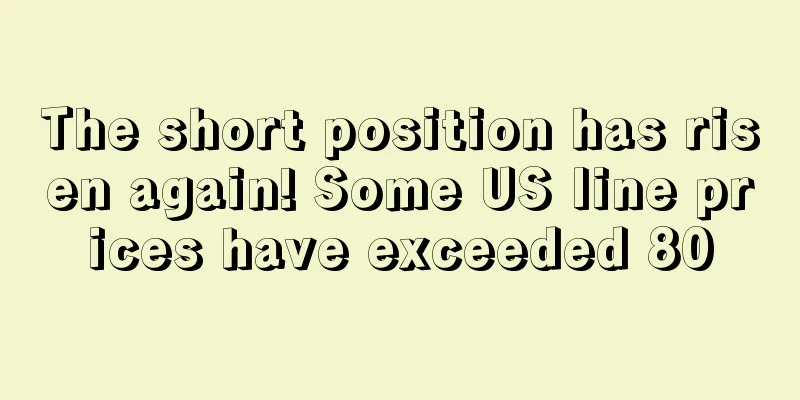The short position has risen again! Some US line prices have exceeded 80

|
In the past two weeks, air freight prices have been rising. Freight forwarders complained that air freight prices were adjusted three times last week alone, and sellers also complained that the shipping price exceeded 70. Why is air freight so expensive? Can increasing the air freight ratio to adapt to Amazon's inventory restrictions still work?
Air freight prices continue to rise, with some quotations breaking through the 80 mark
The price increase of ocean freight caught people off guard. In recent days, there have been more and more feedbacks about the price increase of air freight ;
On Monday, a freight forwarder said that the company's air freight price to the United States was about 60/61/62, and the price of Canadian FBA general cargo delivery in the 21-70 kg range was also close to 62 yuan. Two weeks ago, the price of general cargo air freight from mainland China to the United States was 48 yuan/KG, an astonishing increase.
It is understood that the number of parcels has continued to increase after the epidemic in Europe and the United States eased. Freight forwarders analyzed that when the US transportation routes become busy, transportation in other parts of the world will be affected because the capacity is attracted to the US routes with higher rates. In the US market, the air cargo terminals in the West and East of the United States are seriously overwhelmed, the efficiency of depalletizing is low, and there is a shortage of manpower. The freight rates of air delivery and express delivery channels have risen sharply, and there is a trend of breaking 70 yuan.
The air freight prices are rising continuously. Some sellers even said they "cannot afford" the price of 60 yuan. Now some sellers' shipping prices have exceeded 70 yuan, which few people can afford. The freight forwarder added that now air freight space must be booked many days in advance, even at 70 yuan.
A freight forwarding company in Shanghai reported that the price from Hong Kong to the United States has approached $12.88 per kilogram , and there are even offers of $13. In response, the freight forwarder said that most of the goods going to Hong Kong are powered goods, which are more expensive. Before this wave of price increases, the price of powered products was 67/68/69 yuan, but now it is far more than 80 yuan.
The price of short delivery has far exceeded expectations, but may not have reached its peak yet.
After Amazon’s inventory restriction policy, some sellers plan to increase the proportion of first-leg air transportation and increase the frequency of replenishment; Prime Day is approaching, and sellers use air transportation to meet the final delivery deadline; before May 20, Apple will ship a large number of goods in Shanghai, Kunshan, Zhengzhou, Shenzhen, and Chengdu, which will cause a large amount of goods to flood into the air transportation market, and air transportation prices may continue to rise.
Sellers are complaining about the high prices and soaring freight rates. Freight forwarding companies are also suffering as they cannot receive goods without space, while air and sea freight rates are both rising. Their operating costs have been repeatedly raised, and in order to advance freight and raise working capital, some freight forwarders are even using their properties as collateral. Mike, an industry insider, said that the continuous increase in freight rates has made it difficult for freight forwarders to advance funds. In February, a freight forwarder told me that he met many of his peers at the real estate registration center, and they were all applying for mortgages to advance freight. Until now, market freight rates are still rising rapidly, and some freight forwarders who have never lacked money have begun to tighten their belts and shorten the payment period. Air delivery demand increases after new inventory restrictions
A few days ago, Amazon lifted the ASIN shipping restrictions and instead limited the replenishment quantity of the entire account . This has had a certain impact on some sellers.
After the new regulations were implemented, some sellers analyzed that the original ASIN-level replenishment restrictions disappeared and were replaced by total quantity restrictions. Amazon wants everyone to stock more of its superior products and abandon unsatisfactory products.
Regarding limiting the replenishment quantity of the entire account, the countermeasures shared by industry insiders include improving product development capabilities, increasing the proportion of first-leg air transportation, using overseas warehouses for transit, and clearing redundant inventory.
In order to comply with Amazon's new policy, sellers' demand for air shipments will further increase, in an effort to improve inventory turnover as much as possible.
With the increasing demand from sellers and the serious overcrowding of air cargo terminals in the West and East Coast of the United States, the price of air freight may continue to rise. This has increased the cost of sellers invisibly!
Using overseas warehouses for transfer also faces considerable problems. Recently, the transfer speed of overseas warehouses has been very slow. Some sellers said that the goods transferred from overseas warehouses in the East Coast of the United States to the East Coast warehouse were only a few hundred kilometers away, but they had not been put on the shelves in 32 days. The transfer of overseas warehouses to FBA is particularly slow, and some sellers have not even put their goods on the shelves for 2 months.
Some sellers sent goods from overseas warehouses to CLT2 warehouses, but they have not been put on the shelves for 18 days. This speed is heartbreaking! The seller complained: "CLT2 warehouse is simply toxic. I suspect that this warehouse has been closed."
In terms of clearing redundant inventory, the industry's leading sellers have already begun to take action. Sellers with more than 1,000 orders per day are accelerating the clearance of redundant inventory and the launch of new products.
Some Amazon sellers cut prices to increase product sales
Under the new policy, in order to quickly obtain inventory capacity, some sellers are also using price cuts to increase product sales.
One seller said that he had seen competitors lower their prices. These competitors may have sacrificed the profits of two cabinets, squeezed out their peers with low prices, and then started to collect profits after they stabilized, thus reducing traffic costs.
Another seller found that after Amazon’s inventory restrictions, it was obvious that the top sellers were lowering their prices. A colleague directly shared his own results: 60,000 yuan in sales per day , 30,000 yuan of which were from clearing inventory.
In addition to price cuts, some sellers are increasing their advertising investments in an attempt to increase product sales. Recently, many sellers have found that the cost of advertising has increased significantly, the conversion rate is particularly low, and it is really difficult to promote new products.
The high advertising investment of sellers has pushed up Amazon's advertising revenue to a certain extent , and Amazon's advertising revenue is currently accelerating. In the fourth quarter of 2020, Amazon's advertising revenue reached US$7.95 billion, a year-on-year increase of 66%. A data shows that sellers will invest more in advertising by 2021; compared with the past few years, 34% of Amazon sellers plan to spend more on strategic advertising.
The inventory update triggered a series of chain reactions, which invisibly accelerated the pace of operating on Amazon for sellers.
Is Amazon's inventory capacity update really that scary ? In fact, for sellers who are cautious and prudent, it may be a good thing.
An old seller mentioned that the new policy obviously favors sellers with operational capabilities and inventory capacity, which may be very unfriendly to new sellers and increase the difficulty of doing business. For capital sellers, this policy may slow down the expansion speed of some big guys and leave us more time to improve products and teams.
When sellers get used to Amazon’s high growth and high profits, and think that it is easy to get rich by selling a lot of orders on Amazon, they will have higher expectations in their hearts . This mentality needs to be adjusted.
An industry insider mentioned that Amazon is no longer at the stage of SKU shortage six or seven years ago . Now there is an oversupply of SKUs, and many categories are obviously homogenized, which is definitely not what Amazon wants to see. Under the new policy, sellers need to refine their operations and further optimize their SKU layout. Air delivery, USA, logistics |
<<: "May Day" holiday for 10 days! These products are hot selling in Russia
Recommend
After 7 years on Amazon, sellers are in debt of 10 million
In the past two years, sellers have been complain...
What is Su Shang College? Review, Features
<span data-docs-delta="[[20,{"gallery"...
What is Vendor Express(VE)? Vendor Express(VE) Review, Features
Amazon VE is the abbreviation of Amazon Vendor Ex...
South Korea's 11th Street sales in the fourth quarter of 2020 increased by 15% year-on-year
As one of the top three e-commerce platforms in S...
What is VeMoBro? VeMoBro Review, Features
VeMoBro is a Philippine e-commerce platform that a...
The seller spent 1 million in a month. Is it difficult to run an independent website in this trend?
Independent websites are gaining popularity. Shou...
What is mParticle? mParticle Review, Features
Founded in New York in 2013, mParticle collects cu...
What is Repricing Central? Repricing Central Review, Features
Repricing Central is an automated Amazon repricer ...
WorldFirst is doing something big again! Hulan invites you to watch the first cross-border e-commerce talk show
@All cross-border e-commerce friends! The first c...
Entering the $30 billion resale market, Lululemon USA launches new initiatives
Recently, Lululemon announced that it will pilot ...
What is MarketPlaceAFRICA.com? MarketPlaceAFRICA.com Review, Features
MarketPlaceAFRICA.com is a global platform jointl...
What is Wanda? Wanda Review, Features
Wantong Anda (Ningbo Wantong Anda Supply Chain Man...
Brexit puts e-commerce business in trouble, with exports down 41%
It has been more than a year since the UK left th...
Shopify bets on SHOP to compete with Amazon
Shopify is vigorously promoting its S HOP applica...
What is Ritual? Ritual Review, Features
Founded in 2015, Ritual is a women's vitamin ...









